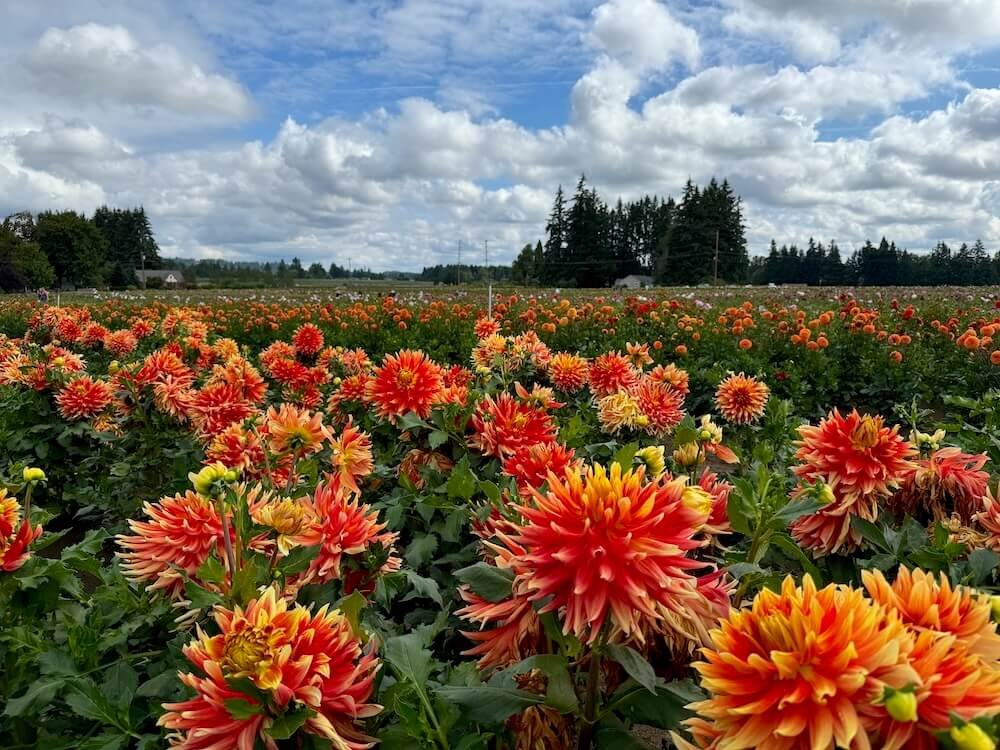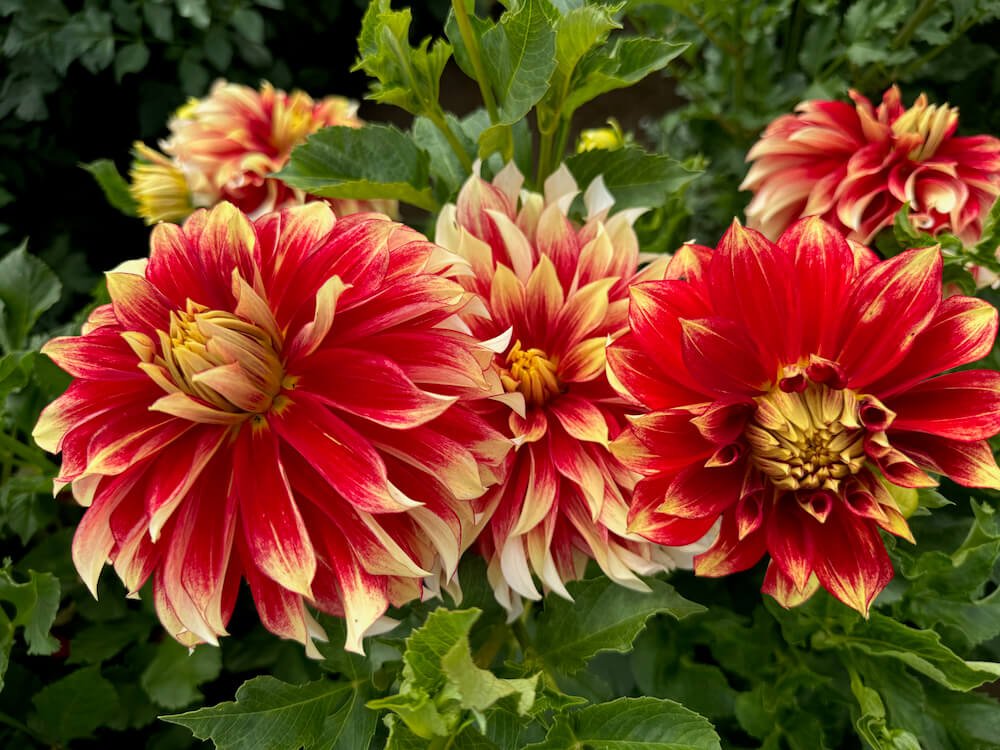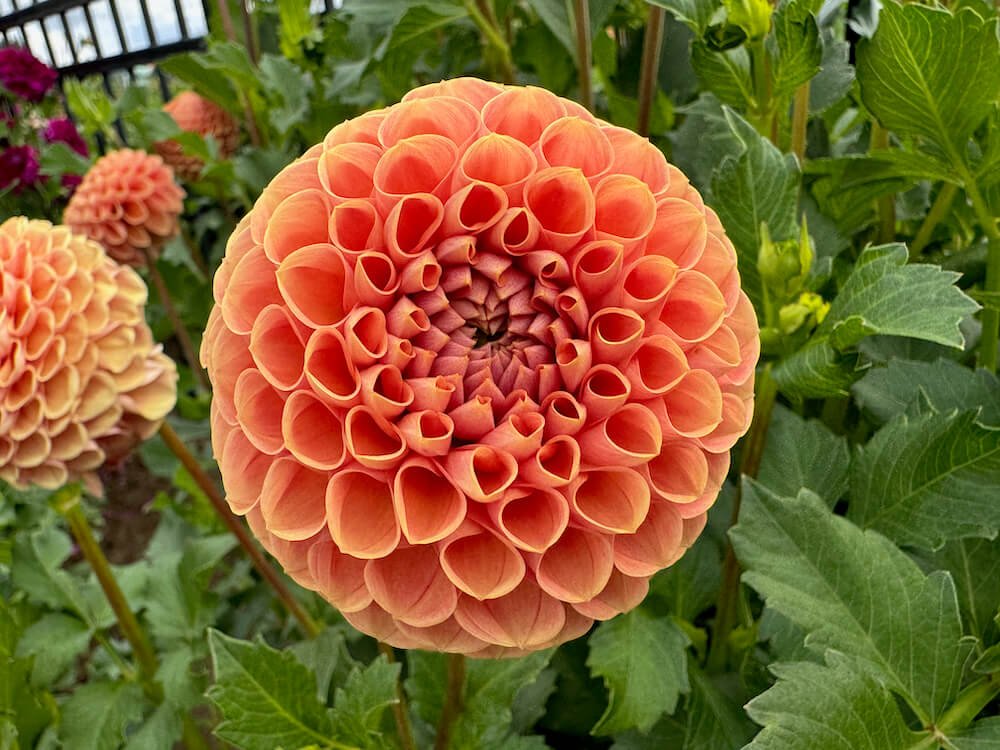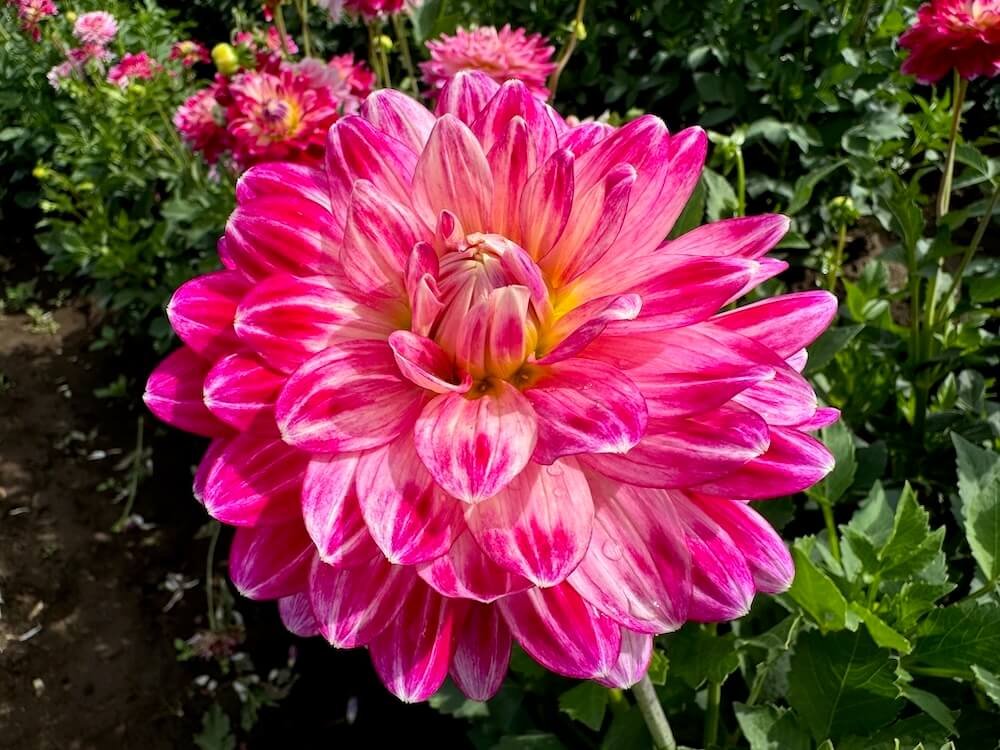PLANTING DAHLIAS
Dahlias, native to the mountainous regions of Mexico and Central America, have a rich history that dates back to the Aztecs, who cultivated them for both ornamental and medicinal purposes. Introduced to Europe in the late 18th century, they quickly gained popularity for their vibrant colors and variety of forms, with breeders developing thousands of cultivars over time.
Today, dahlias are celebrated for their remarkable diversity, with blooms ranging from small, delicate pompons to large, dramatic dinnerplates. Their petals can display intricate color patterns, from soft pastels to bold, contrasting hues, making them a favorite in gardens and floral arrangements around the world. Whether admired for their stunning visual impact or their long-lasting blooms, dahlias remain one of the most cherished flowers in horticulture.
PLANTING & CARING FOR DAHLIAS
Dahlias are low-maintenance and have a long and abundant blooming season. Planting them is easy and can be accomplished in a few steps. They prefer a sunny location with well-draining soil and can be planted after the last frost.
Sourcing Dahlia Tubers
You can find dahlia tubers and seeds at your local garden store and online. Visit dahliaaddict.com for help in finding online sources based on dahlia variety.
Many garden centers sell dahlia tubers in spring and flowering plants in mid-summer. You can find a list of Seattle area nurseries here.
DAHLIA PLANTING STEPS
-

1.) SELECT THE RIGHT TIME
Dahlia tubers can be safely planted after the last frost, which is typically at the beginning of May in the Pacific Northwest.
-

2.) CHOOSE A SUITABLE LOCATION
Dahlias thrive in full sun but can tolerate some partial shade. Select a location with at least six hours of sunlight, sheltered from strong winds, and with excellent drainage.
-

3.) MATERIALS
- Dahlia tubers
- Shovel
- Bone meal
- Plant stakes and string
- Watering can or hose
- Fertilizer
- Pruners -

4.) PREPARE THE SOIL
Amend the soil by deep tilling and adding compost for improved fertility. Ensure the soil is loamy and well-draining, as dahlias do not thrive in waterlogged conditions. Adding peat moss can help if soil is heavy.
-

5.) PLANT DAHLIA TUBERS
Dig a hole twice as deep and wide as the dahlia tuber. Add 1 tablespoon bone meal per tuber, to the soil. Place the tuber with the bud, or "eye" facing upward. See below for bud photo. If planting multiple tubers, space them about 2 feet apart to allow each plant enough room to grow.
-

6.) COVER WITH SOIL
Fill the hole with soil, covering the top of the tuber just enough. As new growth appears, gradually cover the stem with soil to strengthen it for supporting flowers. This is also the ideal time to install plant stakes, so to avoid piercing the tuber later. It is also helpful to write the dahlia variety on the stake.
-

7.) WATER
Unless it's an exceptionally dry spring, avoid watering at the time of planting to prevent rot. Once new growth is visible, keep the soil consistently moist, especially during dry periods. Dahlias prefer well-drained soil, so avoid waterlogged conditions. Water at the base of the plant to minimize the risk of fungal diseases.
-

8.) FERTILIZE
Begin fertilizing plants after they have reached a foot tall and continue fertilizing every 3-4 weeks during the growing season. Use a fertilizer with higher levels of Phosphorus and Potassium, such as a 5-10-10 blend. Avoid over-fertilizing, as this can lead to excessive foliage growth at the expense of flowers.
-

9.) MAINTENANCE
Snip off the main stalk of the plant when it is 12-18 inches tall to encourage stronger multi-branched stems and more blossoms. Remove lower foliage to promote good air circulation and to prevent powdery mildew. Remove spent flowers regularly to redirect nutrients and promote continuous blooming. Provide support by using stakes or cages to prevent branches from breaking.
-

10.) OVERWINTERING
It is recommended to dig dahlia tubers up to prevent them from potentially freezing during a cold snap, or from rotting by the wet winter weather. Before the first frost, dig up the tubers, thoroughly wash them off with water, allow them to dry, and store them in a cool, dry place for the winter. This prevents the tubers from freezing and ensures healthy plants the following season.
DAHLIA FORMS
Dahlias are truly unique in the flower world for their incredible variety of forms, each showcasing a different shape, petal arrangement, and texture. From delicate, pom-pom-like blooms to large, sprawling blossoms, these diverse forms offer something for every taste and garden style. This variety makes dahlias endlessly captivating to collectors and gardeners alike, with each form bringing its own charm and visual impact to floral displays, bouquets, and landscapes. The following list highlights the distinct forms of dahlias, each one offering a unique take on this exceptional flower.
-

Anemone
The anemone dahlia form features a unique bloom with a dense cluster of tubular petaloids (pincushion) at its center, surrounded by a single or double row of flat ray petals, creating a striking contrast in texture.
-

Ball
The ball dahlia form is characterized by its perfectly round, fully double blooms with tightly arranged petals in a spiral pattern, and the miniature ball variety offers the same spherical shape but in smaller, compact sizes.
-

Cactus
The cactus dahlia form is known for its spiky, fully double blooms with long, narrow petals that roll back or twist. Semi-cactus are partly rolled, and incurved cactus petals curve inward toward the center.
-

Collarette
The collarette dahlia form showcases an open-centered bloom with a single row of flat ray petals and a distinctive collar of smaller, often contrasting, petaloids surrounding the center disc.
-

Formal Decorative
The formal decorative dahlia form features fully double, symmetrical blooms with broad, smooth petals that uniformly curve toward the center, creating a neat, elegant appearance.
-

Informal Decorative
The informal decorative dahlia form is characterized by its fully double blooms with loosely arranged petals that twist or curl in varying directions, giving the flower a more relaxed and natural look.
-

Lacinated
The laciniated dahlia form is distinguished by its fully double blooms with deeply split or fringed petal tips, giving the flower a finely ruffled, feathered appearance.
-

Novelty
The novelty dahlia form encompasses blooms with unusual petal shapes, arrangements, or color patterns that do not fit into traditional dahlia categories.
-

Orchid
The orchid dahlia form features a single row of long, tubular ray petals that flare outward around an open center. The orchette form adds a second, smaller row of petaloids beneath the main petals.
-

Peony
The peony dahlia form is characterized by its lush, fully double blooms with broad, overlapping petals that create a dense, rounded shape reminiscent of traditional peony flowers.
-

Pom Pon
The pom pon dahlia form features perfectly round, fully double blooms with tightly arranged, slightly cupped petals, forming a small, globe-like shape.
-

Single
The single dahlia form features a single row of flat ray petals surrounding a prominent central disc. The mignon single form showcases smaller, compact blooms that maintain the same simple, elegant structure.
-

Stellar
The stellar dahlia form is characterized by its unique star-shaped blooms, which feature elongated, pointed petals that radiate outward from a central disc, creating a striking and dynamic appearance.
-

Waterlily
The waterlily dahlia form is distinguished by its flat, wide blooms with broad petals that are loosely arranged, resembling the graceful, open shape of waterlily flowers.







